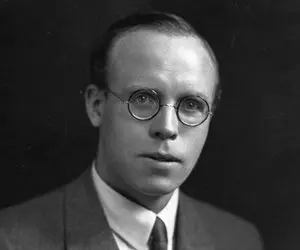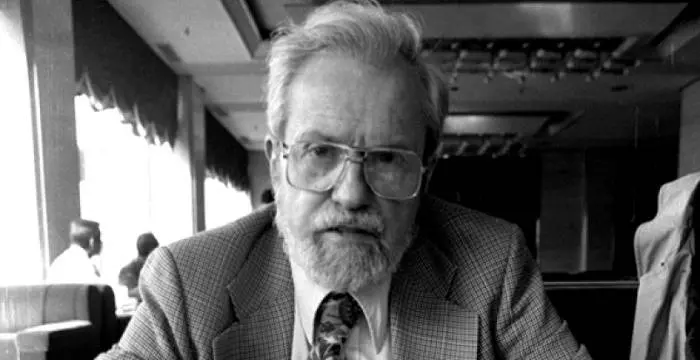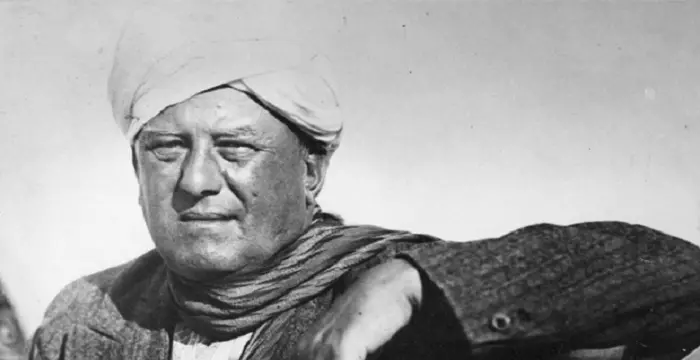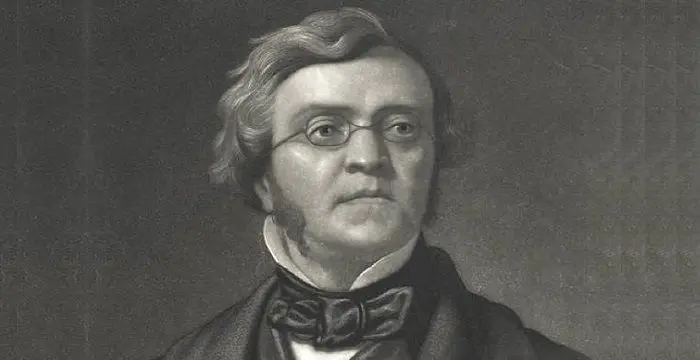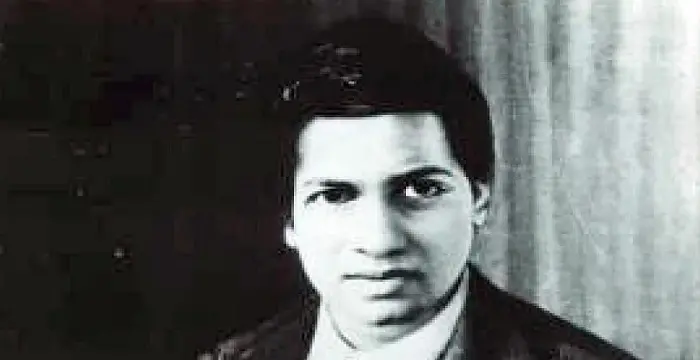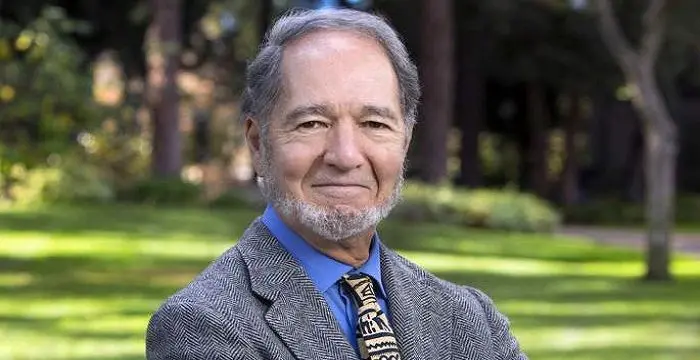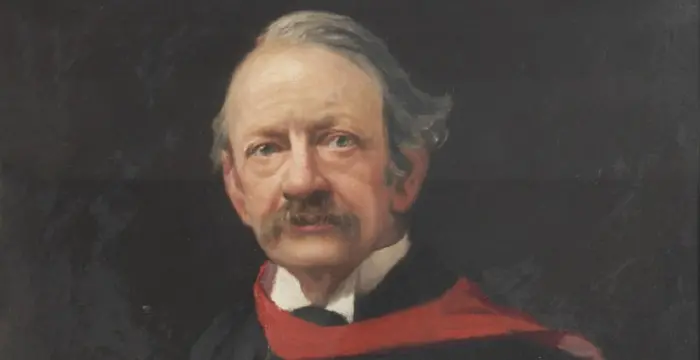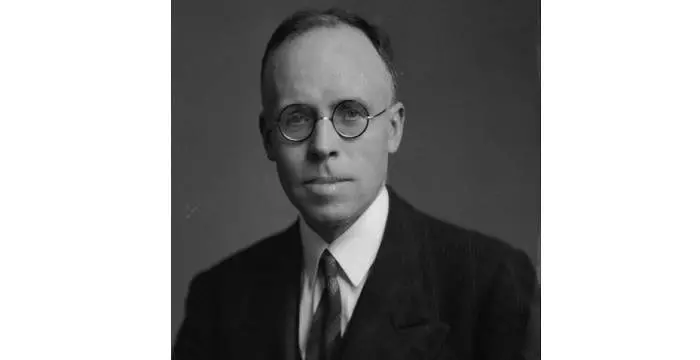
Edward Arthur Milne - Trinity College, Cambridge, Family and Childhood
Edward Arthur Milne's Personal Details
Edward Arthur Milne was an English astrophysicist and mathematician, best known for developing the theory of kinematic relativity
| Information | Detail |
|---|---|
| Birthday | February 14, 1896 |
| Died on | September 21, 1950 |
| Nationality | British |
| Famous | Trinity College, Cambridge, Scientists, Mathematicians, Astrophysicists |
| Spouses | Beatrice Brevoort Renwick, Margaret Campbell |
| Universities |
|
| Notable Alumnis |
|
| Birth Place | Kingston upon Hull |
| Gender | Male |
| Father | Sidney Arthur Milne |
| Mother | Edith Cockcroft |
| Sun Sign | Aquarius |
| Born in | Kingston upon Hull |
| Famous as | Astrophysicist |
| Died at Age | 54 |
// Famous Mathematicians
Grigori Perelman
Grigori Perelman is a Russian mathematician who is best known for his contributions to Riemannian geometry and geometric topology. Check out this biography to know about his childhood, family life, achievements and fun facts about him.
Terence Tao
Terence Tao is an Australian- American mathematician who has contributed enormously to the field of mathematics. Check out this biography to know about his childhood, family life and achievements.
Isaac Newton
Isaac Newton was an English scientist and mathematician, who discovered gravitation and Newtonian Mechanics. Read this biography to find more on his life.
Edward Arthur Milne's photo
Who is Edward Arthur Milne?
Edward Arthur Milne was an English astrophysicist and mathematician, best known for developing the theory of kinematic relativity. Even though his theory met with considerable opposition, it had a significant impact on the scientific community and made them rethink old ideas and led to new approaches to the fundamental concepts of space and time. He was small in stature, but possessed extraordinary talent and was a constant source of inspiration to others. His early researches were into the atmosphere of the Earth and Sun, internal physics of the stars and the theory of limb darkening. He was also a brilliant mathematician and helped the armed forces in both the world wars with his exceptional skills. He was instrumental in development of an integral equation of great mathematical interest, what is now called Milne's integral equation. He published works on numerous subjects ranging from philosophy of science and mathematics to physics and astronomy. He had the modesty and simplicity of character that often goes with scientific genius, and he also bore personal adversities with audacity and dignity. His life was a tribute to scientific research and through his ideas and principles he laid the foundation for more profound study on cosmological patterns and various other facets of astronomy.
// Famous Scientists
Juliane Koepcke
Juliane Koepcke is a German-Peruvian biologist, who was the lone survivor among the 92 passengers and crew of the ill-fated LANSA Flight 508 that crashed in the Peruvian rainforest on 24 December 1971. Know more about her life in this biography.
Henry Cavendish
Henry Cavendish was a theoretical chemist and physicist, renowned for discovery of hydrogen and calculation of the mass of earth. To know more about his childhood, profile, timeline and career read on
Konstantin Tsiolkovsky
Konstantin Tsiolkovsky was a Russian rocket scientist and a pioneer of astronautics. This biography provides detailed information about his childhood, family, personal life, career, achievements, etc.
Childhood & Early Life
He was born on February 14, 1896 in Hull, Yorkshire, England to Sidney Arthur Milne, a headmaster and his wife, Edith Cockcroft, a teacher. He was the eldest child in his family with two younger brothers.
He received his early education from the Hymers College, Hull, England. In 1914, he won an open scholarship in mathematics and natural science to study at Trinity College, Cambridge University.
He secured the highest number of marks ever scored in the examination. While studying at Cambridge for one and a half year, he was inspired by Chapman and Hardy.
His education at Cambridge was intervened by World War I. Although he was deemed unfit for military duty due to his poor eyesight, he was assigned on a team working on ballistics at the Anti-Aircraft Section of the Munitions Inventions Department in 1916.
Career
In 1917, he was appointed a Lieutenant in the Royal Navy Volunteer Reserve.
From 1919 to 1924, he served as the assistant director of the solar physics observatory at the Trinity College. It was here that he focused his attention to work on stellar atmosphere.
While working at the observatory, he was also appointed as the mathematics lecturer (1924–1925) and university lecturer in astrophysics (1922–1925) in Trinity College. In 1923, he collaborated with R.H.Fowler to study absorption lines in stellar spectra.
From 1925 to 1928, he served as a professor of applied mathematics in the Victoria University of Manchester. While at Manchester, he continued his research in radiative equilibrium and the structure of stellar atmospheres.
In 1929, he became a Rouse Ball Professor of Mathematics in the University of Oxford, a post he held until his death in 1950. In later years, he turned his attention towards cosmological patterns and its relative effects.
During World War II, he again worked on ballistics. He researched on armor piercing weaponry and the stability of projectiles. He also served as the president of the Royal Astronomical Society from 1943 to 1945.
Some of his published work includes ‘Thermodynamics of the Stars’ (1930), ‘The White Dwarf Stars’ (1932), ‘Relativity, Gravitation and World-Structure’ (1935) and ‘Kinematic Relativity’ (1948).
Major Works
One of his significant contributions was the role he played when he was part of a highly skilled group of mathematicians during the First World War. He was instrumental in the development of a technique that enabled anti-aircraft and naval guns to accurately target Zeppelin bombers.
His work on radiative equilibrium and the theory of stellar atmospheres with R.H. Fowler led to the determination of the temperatures and pressures associated with spectral classes, the theory of limb darkening and improved understanding of line profiles in stellar spectra.
One of his most notable works was the development of kinematic relativity related to cosmology. His theory featured an expanding universe, but it was nonrelativistic and used Euclidean space. Although his contemporaries initially disagreed with this theory, it helped to sharpen mainstream ideas about space-time and led to important work by others in future.
Awards & Achievements
In 1918, he was conferred the title of Officer of the Most Excellent Order of the British Empire.
In 1922, he was awarded the prestigious Smith’s Prize for an essay on the darkening of the limb of a stellar disk.
In 1935, he received the Royal Astronomical Society Gold Medal.
In 1941, he was awarded the Royal Medal by the Royal Society.
In 1945, he became the recipient of distinguished Bruce Medal, one of the highest honors in the field of astronomy. It was awarded by the Astronomical Society of the Pacific for his outstanding lifetime contributions to astronomy.
‘Milne’, a large lunar crater located in the southern hemisphere on the far side of the Moon is named after him.
‘11767 Milne’, an asteroid discovered in 1971, was named in his honor.
Personal Life & Legacy
In 1928, he married Margaret Campbell. They were blessed with two daughters and a son. Unfortunately, Margaret died during the birth of their son.
In 1940, he married again, this time to Beatrice Brevoort Renwick. They had a daughter but unfortunately, Beatrice also died in 1945.
He died of a heart attack on September 21, 1950, at the age of 54, in Dublin, Ireland while preparing to give a set of lectures.
// Famous Astrophysicists
Neil deGrasse Tyson
Neil deGrasse Tyson is an eminent astrophysicist and a popular science communicator. This biography of Neil deGrasse Tyson provides detailed information about his childhood, life, achievements, works & timeline.
J. Allen Hynek
Josef Allen Hynek was an American astronomer and ufologist. This biography of Josef Allen Hynek provides detailed information about his childhood, life, achievements, works & timeline.
Carl Sagan
Carl Sagan was an American astronomer, astrophysicist, cosmology expert and author. This biography profiles his childhood, family life, facts, career, achievements and timeline.
Edward Arthur Milne biography timelines
- // 1176 To 1971‘11767 Milne’, an asteroid discovered in 1971, was named in his honor.
- // 14th Feb 1896He was born on February 14, 1896 in Hull, Yorkshire, England to Sidney Arthur Milne, a headmaster and his wife, Edith Cockcroft, a teacher. He was the eldest child in his family with two younger brothers.
- // 1914He received his early education from the Hymers College, Hull, England. In 1914, he won an open scholarship in mathematics and natural science to study at Trinity College, Cambridge University.
- // 1916His education at Cambridge was intervened by World War I. Although he was deemed unfit for military duty due to his poor eyesight, he was assigned on a team working on ballistics at the Anti-Aircraft Section of the Munitions Inventions Department in 1916.
- // 1917In 1917, he was appointed a Lieutenant in the Royal Navy Volunteer Reserve.
- // 1918In 1918, he was conferred the title of Officer of the Most Excellent Order of the British Empire.
- // 1919 To 1924From 1919 to 1924, he served as the assistant director of the solar physics observatory at the Trinity College. It was here that he focused his attention to work on stellar atmosphere.
- // 1922In 1922, he was awarded the prestigious Smith’s Prize for an essay on the darkening of the limb of a stellar disk.
- // 1925 To 1928From 1925 to 1928, he served as a professor of applied mathematics in the Victoria University of Manchester. While at Manchester, he continued his research in radiative equilibrium and the structure of stellar atmospheres.
- // 1928In 1928, he married Margaret Campbell. They were blessed with two daughters and a son. Unfortunately, Margaret died during the birth of their son.
- // 1929 To 1950In 1929, he became a Rouse Ball Professor of Mathematics in the University of Oxford, a post he held until his death in 1950. In later years, he turned his attention towards cosmological patterns and its relative effects.
- // 1935In 1935, he received the Royal Astronomical Society Gold Medal.
- // 1940 To 1945In 1940, he married again, this time to Beatrice Brevoort Renwick. They had a daughter but unfortunately, Beatrice also died in 1945.
- // 1941In 1941, he was awarded the Royal Medal by the Royal Society.
- // 1943 To 1945During World War II, he again worked on ballistics. He researched on armor piercing weaponry and the stability of projectiles. He also served as the president of the Royal Astronomical Society from 1943 to 1945.
- // 1945In 1945, he became the recipient of distinguished Bruce Medal, one of the highest honors in the field of astronomy. It was awarded by the Astronomical Society of the Pacific for his outstanding lifetime contributions to astronomy.
- // 21st Sep 1950He died of a heart attack on September 21, 1950, at the age of 54, in Dublin, Ireland while preparing to give a set of lectures.
// Famous Trinity College, Cambridge
Isaac Newton
Isaac Newton was an English scientist and mathematician, who discovered gravitation and Newtonian Mechanics. Read this biography to find more on his life.
Aleister Crowley
Aleister Crowley was an occultist and ceremonial magician who founded the ethical philosophy of Thelema. This biography of Aleister Crowley provides detailed information about his childhood, life, achievements, works & timeline.
William Makepeace Thackeray
William Thackeray was an English novelist and satirist. Read this brief biography to find more on his life & timeline.
Srinivasa Ramanujan
Srinivasa Ramanujan was an Indian mathematician who made significant contributions to mathematical analysis, number theory, and continued fractions. Check out this biography to know about his childhood, life, achievements, works & timeline. .
Jared Diamond
Jared Mason Diamond is an American scientist and author reputed for his highly acclaimed and popular science books.
J. J. Thomson
J.J. Thomson was an English physicist and mathematician. This biography profiles his childhood, life, academic career, research and timeline.
Edward Arthur Milne's FAQ
What is Edward Arthur Milne birthday?
Edward Arthur Milne was born at 1896-02-14
When was Edward Arthur Milne died?
Edward Arthur Milne was died at 1950-09-21
Where was Edward Arthur Milne died?
Edward Arthur Milne was died in Dublin
Which age was Edward Arthur Milne died?
Edward Arthur Milne was died at age 54
Where is Edward Arthur Milne's birth place?
Edward Arthur Milne was born in Kingston upon Hull
What is Edward Arthur Milne nationalities?
Edward Arthur Milne's nationalities is British
Who is Edward Arthur Milne spouses?
Edward Arthur Milne's spouses is Beatrice Brevoort Renwick, Margaret Campbell
What was Edward Arthur Milne universities?
Edward Arthur Milne studied at Trinity College, Cambridge, Trinity College, Cambridge
What was Edward Arthur Milne notable alumnis?
Edward Arthur Milne's notable alumnis is Trinity College, Cambridge
Who is Edward Arthur Milne's father?
Edward Arthur Milne's father is Sidney Arthur Milne
Who is Edward Arthur Milne's mother?
Edward Arthur Milne's mother is Edith Cockcroft
What is Edward Arthur Milne's sun sign?
Edward Arthur Milne is Aquarius
How famous is Edward Arthur Milne?
Edward Arthur Milne is famouse as Astrophysicist



